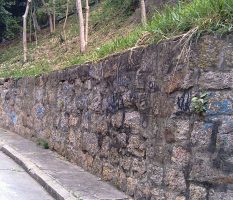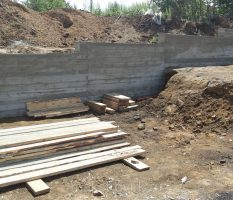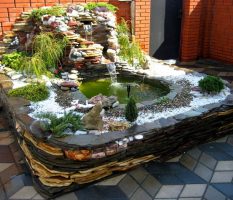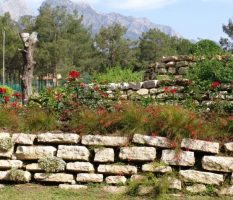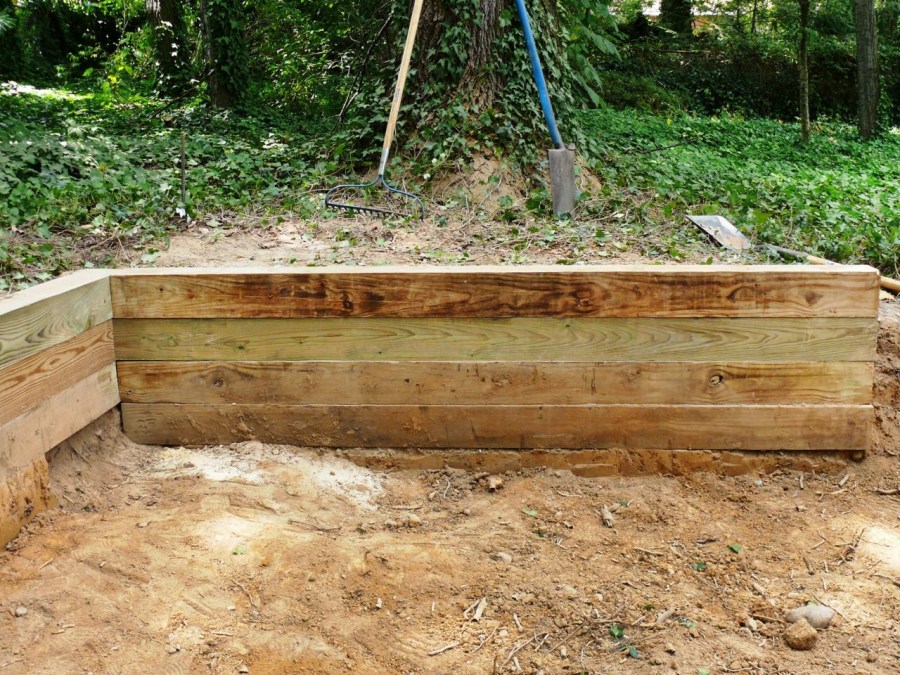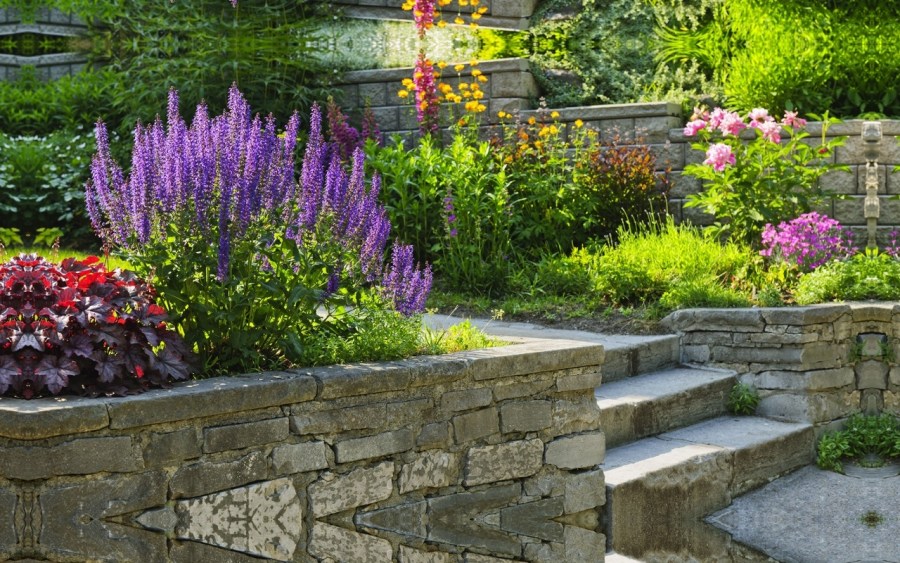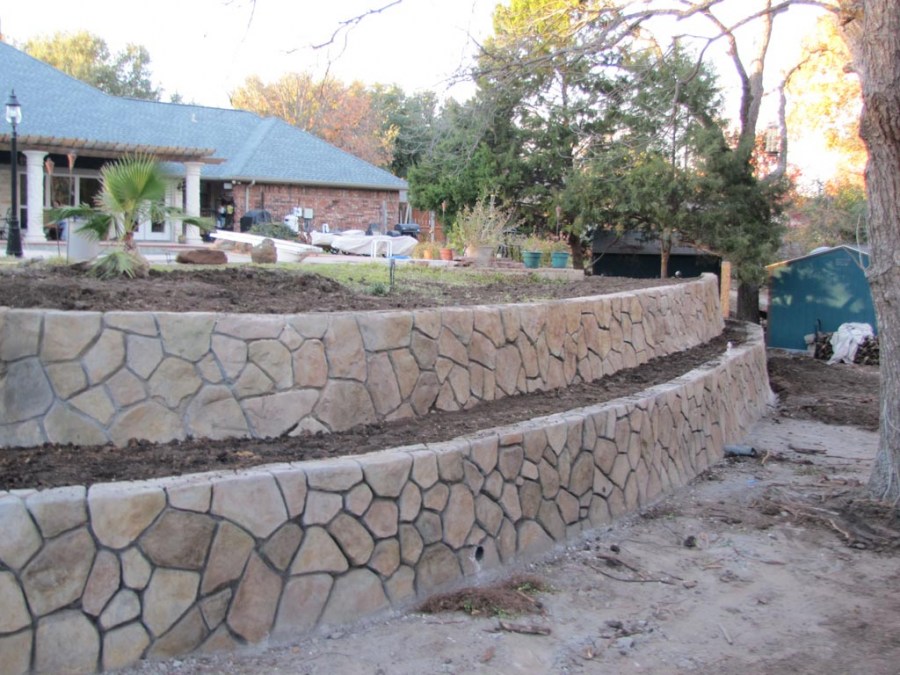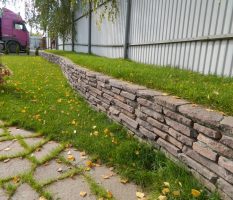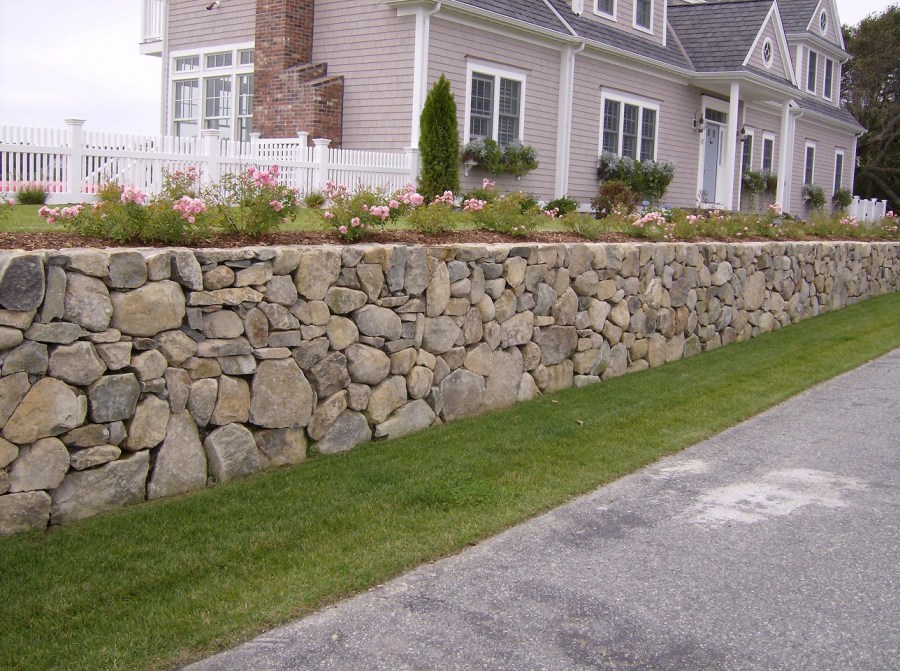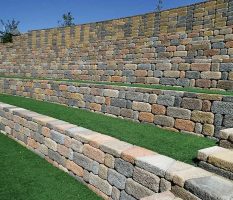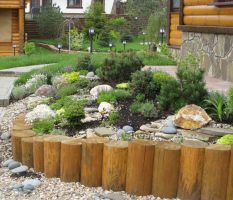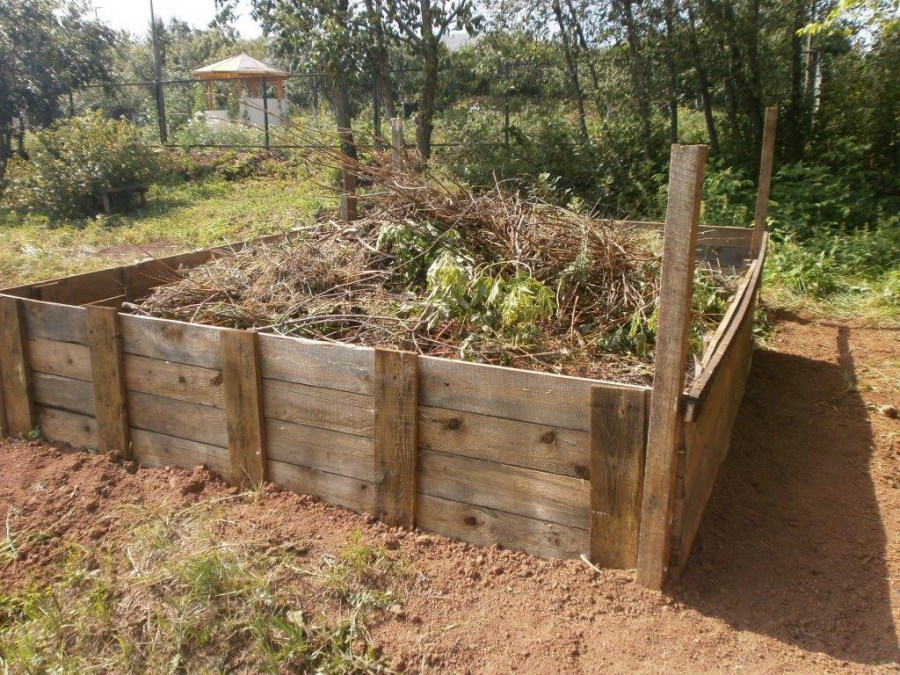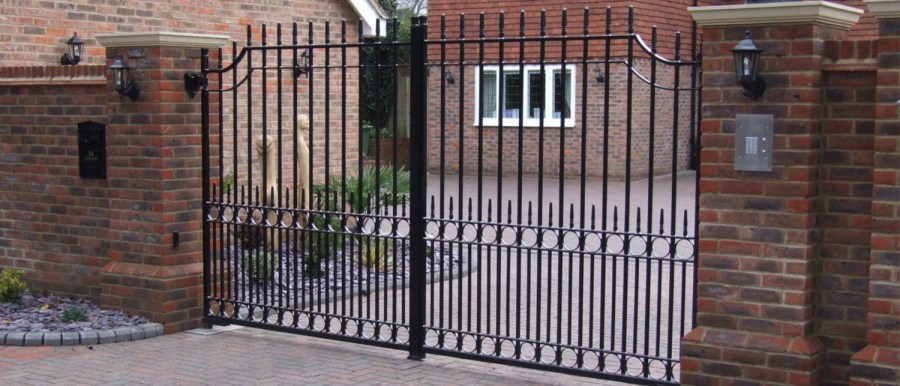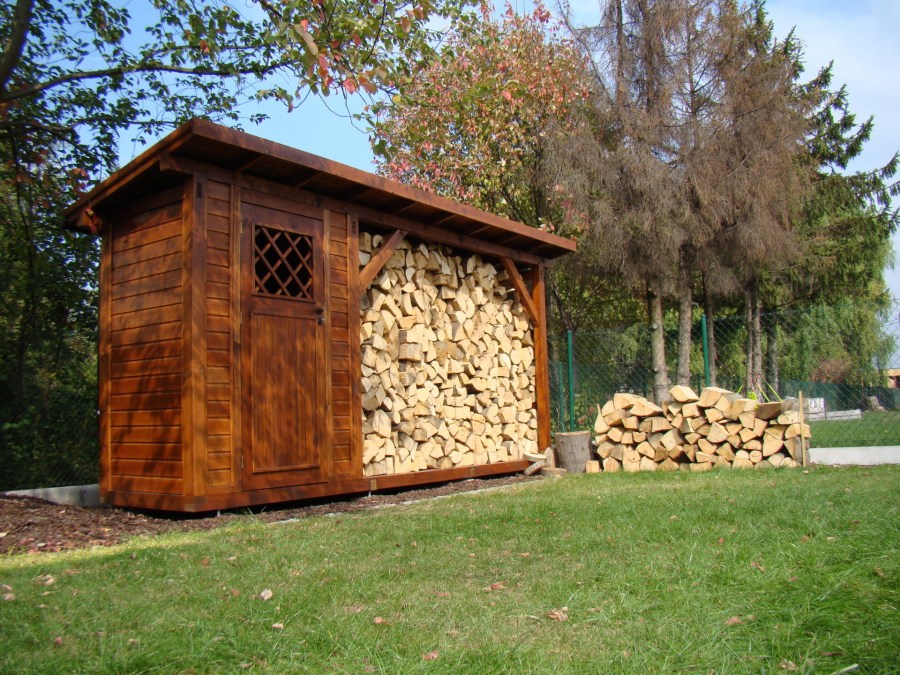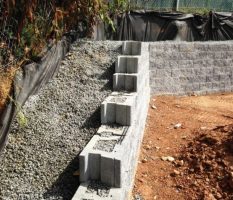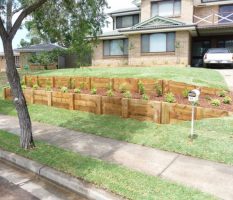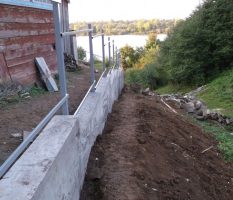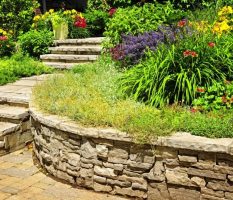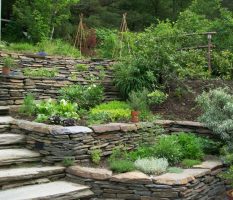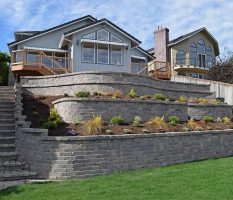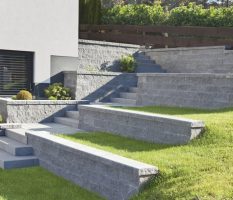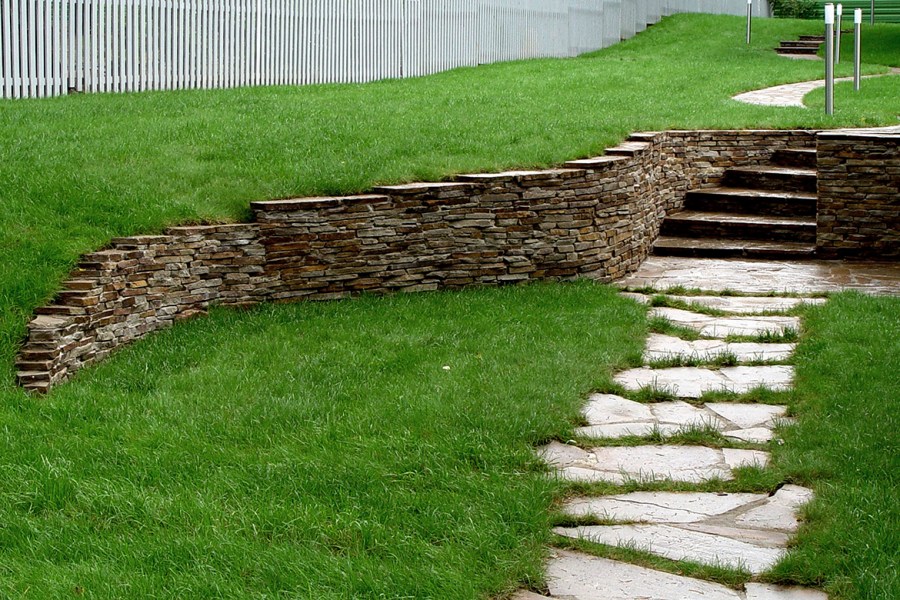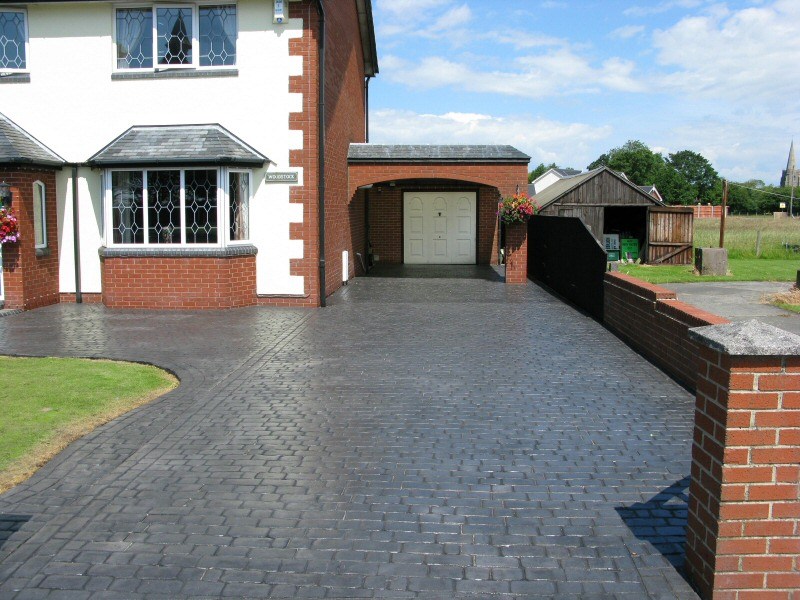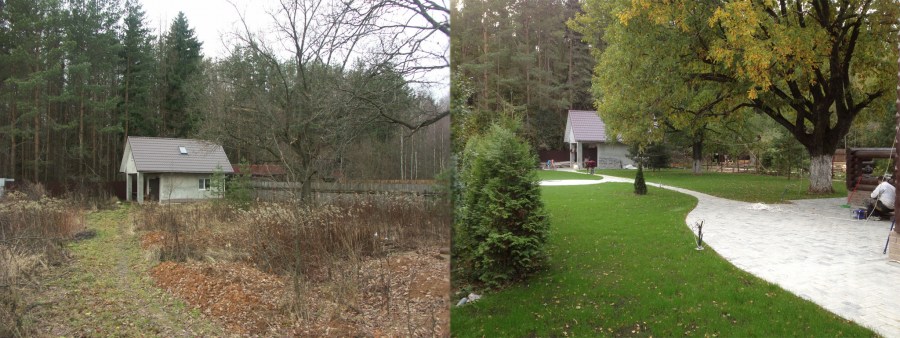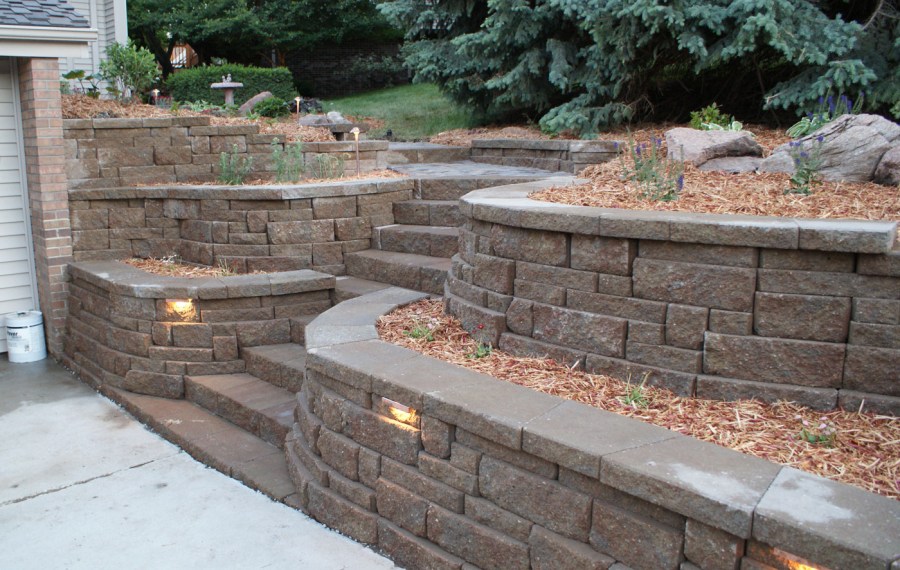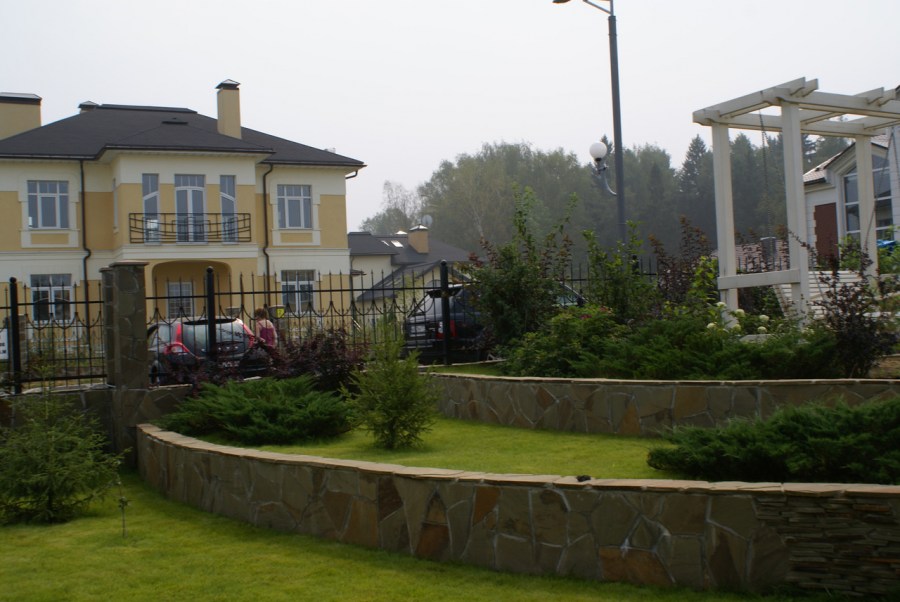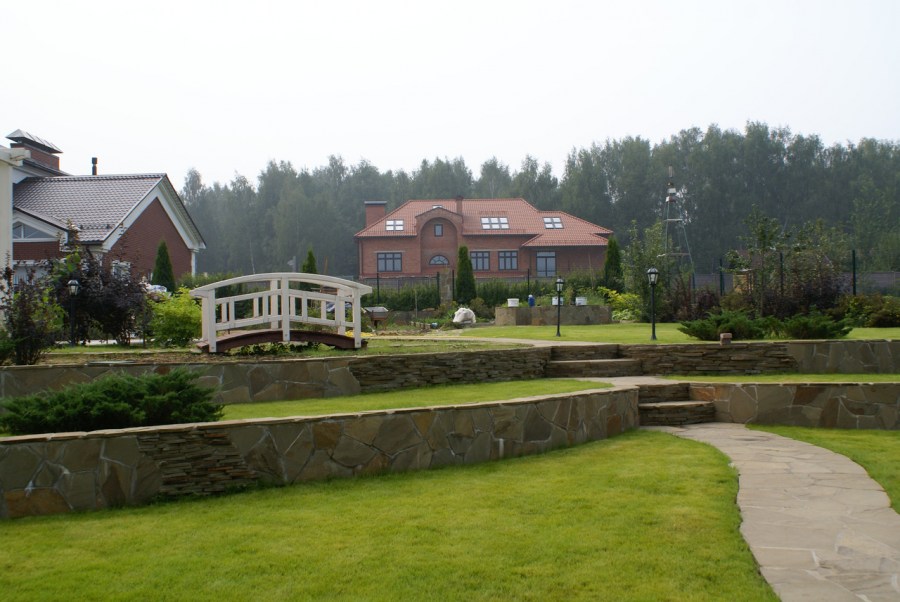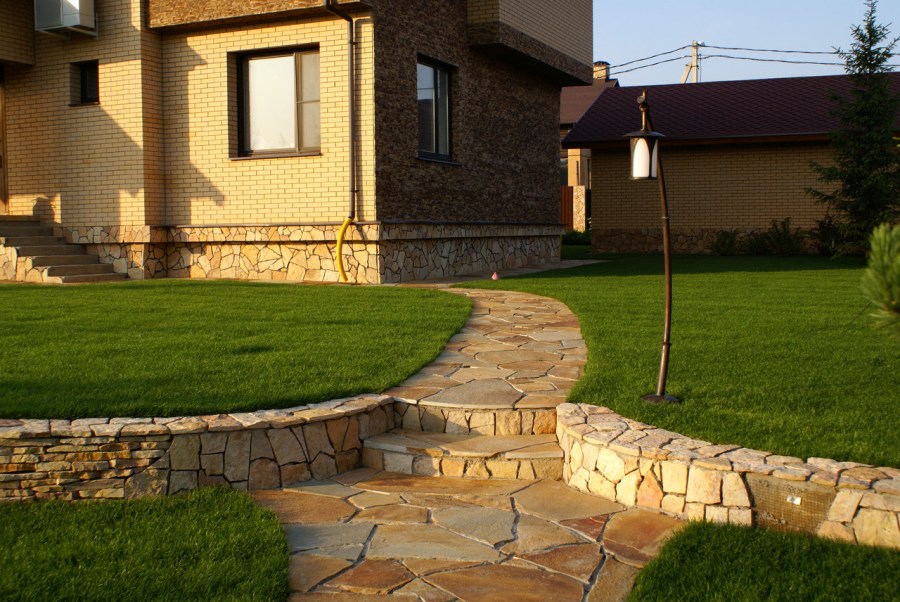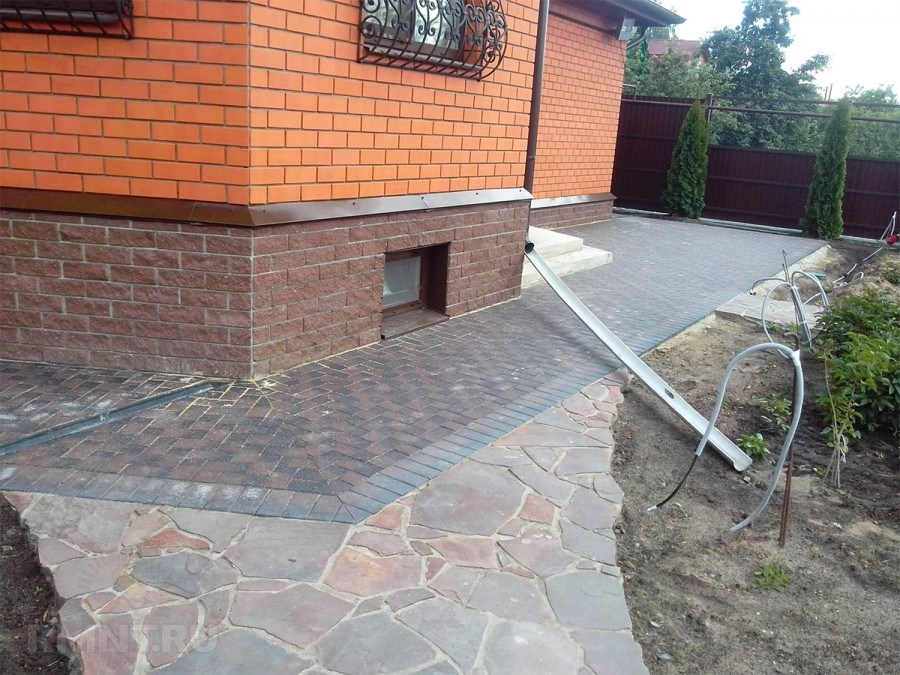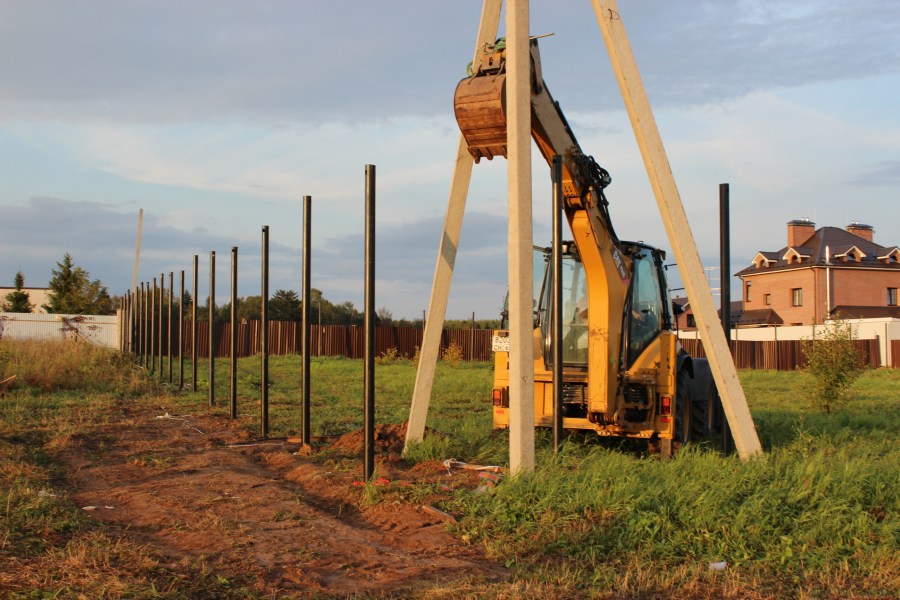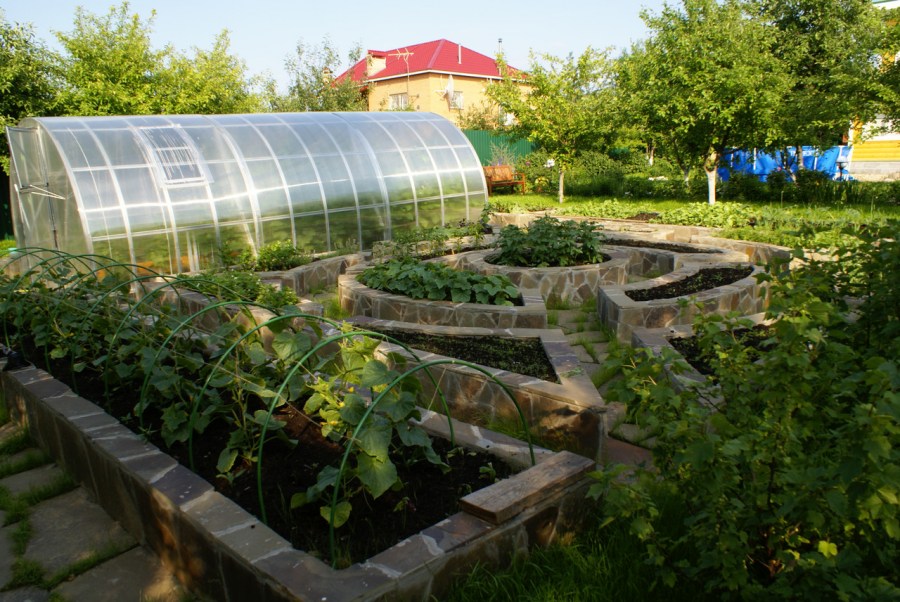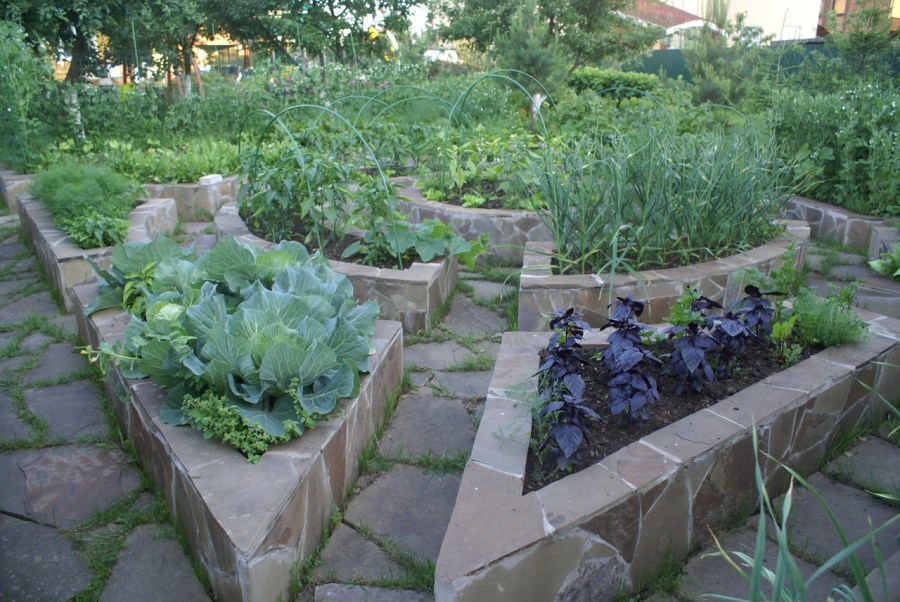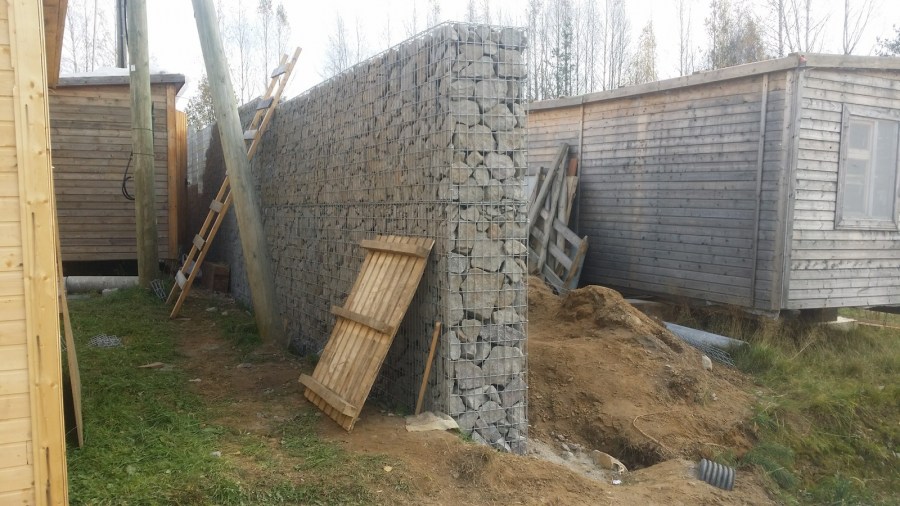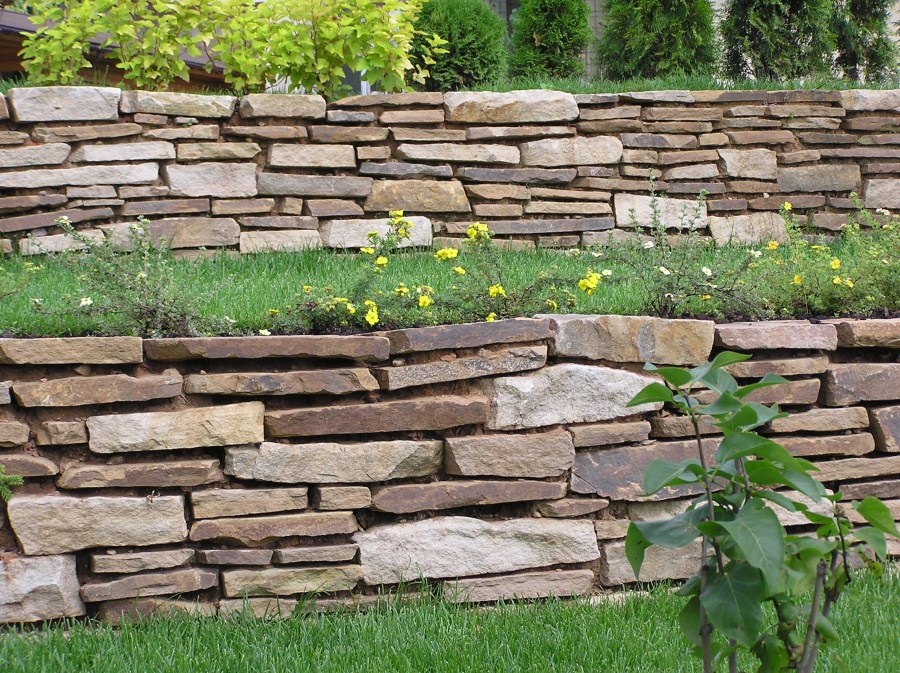Retaining wall: the best designs, popular views, modern materials and installation features (85 photos)
Slopes of the relief on the site complicate land use, in addition, seasonal soil slippage and problems with drainage harm buildings and utilities. With a skillful approach, these shortcomings will be an advantage. Terracing and construction of retaining walls will not only solve technical problems - leveled platforms will expand the possibilities of cultivating the land, but will also become the basis for creating your own Semiramis Gardens with an original landscape design.
The selection of building material for supports depends on the features of the relief and style of design. Logs and beams, concrete, hard rock, bricks and various types of building blocks can be used for retaining walls.
Design Features
Retaining structures are erected on plots of land whose slope is more than 8 degrees.
At the first stage, you need to determine the scale of the relief changes: calculate the number of steps, and decide on building materials.
Fans can erect walls with a height of not more than 1-1.5 meters, the device of retaining walls of greater height should be entrusted to a professional. Their help will also be required if the groundwater on the land is at a depth of less than one and a half meters. The construction of retaining structures on sandy unstable soil was also difficult.
The design of the supporting wall consists of a foundation, a vertical part and drainage. The dimensions of the foundation depend on the weight of the wall and the quality of the soil. The harder the soil, the smaller the depth of the foundation. On loose soils, the foundation becomes practically equal in height to the outer part of the support.
To ensure the stability of the wall, to prevent collapse and distortions, it is given a slight slope towards the embankment. In the center of the long supporting structures, special protrusions are built - unloading platforms that use vertical pressure to increase the stability of the wall. To protect against water along the upper edge, you can install a cornice or visor.
Stone terraces
A wall made of natural stone will become a solid frame and a nice-looking decoration of the site. The width of the foundation should be 2-3 times the width of the wall, the depth equal to about a third of the outer part of the backwater.
When calculating the depth of the trench for the retaining wall, the thickness of the sand and gravel cushion is taken into account. After the bottom is filled with a pillow, concrete is poured at such a level that the first layer of masonry is half below the surface. Drainage can be done in two ways. Place the pipe at the bottom of the wall, or leave a few horizontal holes in it for drainage.
Then you can proceed to the main stage of masonry. From the top up, large stones are placed first, the adhesion is carried out with concrete. You can also choose the option of dry masonry, in which the stones are laid out without adhesive material. Their cracks are filled with soil, in which plants will later germinate.
Long vertical joints and cruciform joints between stones should be avoided. For strength, the wall can be given a small (up to 10 degrees) slope. Additional support will be the sharp edges of the stones, deepened in the lateral soil.
Such structures themselves look picturesque, but you can also apply additional decoration to them by placing plants in crevices, or covering the surface with decorative moss.
Concrete retaining walls
Depending on the area of the terrace and soil characteristics, the concrete backwater can be from 25 cm to half a meter thick. At a third of its height, the wall burrows into the ground. When erecting structures above a meter, reinforcement is used.
In addition to drainage by means of outlet pipes, additional sealing of the surface from the slope side must be undertaken, lubricating it with a special solution. After drying, the space between concrete and ground is filled with rubble and gravel.
Unpretentious concrete opens up wide scope for imagination. It can be faced with ceramic tiles, decorated with stone or covered with plaster. Concrete retaining walls are the ideal backdrop for design using ampelous plants.
Brick walls on the plot
For retaining walls, durable varieties of solid brick are used. The dimensions of the foundation are calculated similarly to stone structures. At a height not exceeding 60 cm, the wall thickness is half a brick - 12 cm. At a height of 60 to 1 meter, the thickness is brick.
Gabions for retaining walls
Gabions are a kind of metal containers filled with stones. They are semi-finished products for assembling the wall using brackets and spirals.
Any stone can become a filler: large decorative pieces are laid out outside, the inside of the cell can be filled with gravel and gravel. Mesh, fasteners, as well as special pins for fixing on the ground are made of galvanized steel.
Wooden retaining structures
The retaining wall of logs or large beams is easy to do with your own hands, it looks extremely attractive, but, due to its fragility, requires periodic repair.
The tree needs to be treated with waterproofing and antifungal agents. Half of the log, which will be underground, can be fired and bituminous, the exterior decorative part is treated with special impregnations and varnishes.
To erect the masonry, a trench breaks out of the tree, the bottom of which is 10 cm covered with a drainage pillow. Then the logs, half their height, are installed inside the ditch, fixed to each other using wire and nails, and covered with gravel and gravel for stability. You can apply horizontal masonry.
Before reinforcing the retaining wall with concrete, drainage should be done by placing longitudinal or transverse pipes at its base. The trench is poured with concrete at a level of 10 cm from the edges. For the side adjacent to the soil, an additional moisture-resistant layer of materials used in roofing waterproofing will be required.
Tire wall
The choice of tires as a building material for fences and terraces is a good use of the idea of recycling. Construction technology involves stepped masonry on stilts. As you can see in the photo, a summer cottage with a retaining wall of tires can look neat and stylish.
Photo of retaining wall
Where should construction waste be taken - see the overview
Garden fountains - 90 photos of decorative projects with their own hands
How to bend a pipe with your own hands? See beginners guide here
Join the discussion:





